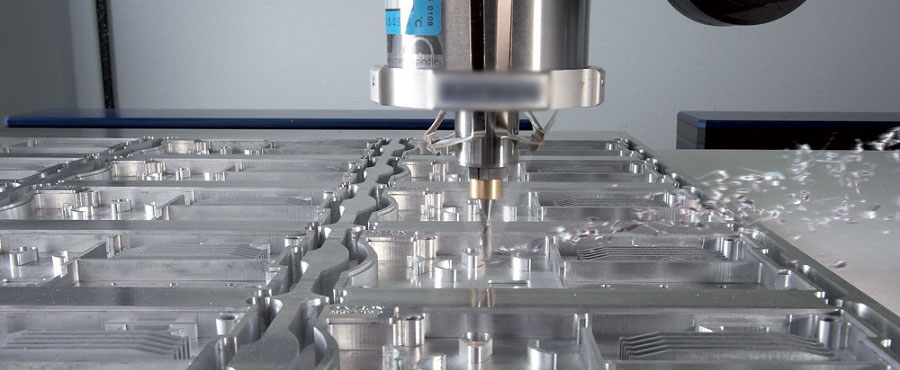Often referred to as “fortal” or “aircraft aluminum,” A7075 is a high-performance alloy renowned for its exceptional strength-to-weight ratio, rivaling that of many steels. As a key member of the 7000 series, its primary alloying element is zinc, which imparts remarkable mechanical properties. This guide provides a detailed, professional overview for successfully machining A7075, covering its characteristics, challenges, and the best practices to achieve precision results.
We examine in detail strategies conducive to achieving effective results when working with intricate parts.
Introduction About 7075 Aluminium
7075 aluminum alloy has become an indispensable core material in modern industry due to its high strength, lightweight, and corrosion resistance.
Ingredients and Process:
7075 aluminum alloy belongs to the Al Zn Mg Cu series superhard aluminum, and its core components include:
Zinc (Zn): content 5.1% -6.1%, forms a strengthening phase MgZn ₂ with magnesium, significantly improving the heat treatment effect
Magnesium (Mg): content 2.1% -2.9%, enhances alloy strength and hardness;
Copper (Cu): content 1.2% -2.0%, improves heat resistance and fatigue resistance;
Chromium (Cr): content 0.18% -0.28%, inhibits recrystallization and improves stress corrosion resistance.
Performance Advantages
High Strength and Lightweight
7075 aluminum alloy boasts strength approaching that of high-quality steel, yet its density is only one-third that of steel. This characteristic makes it a preferred material in the aerospace industry for critical components such as aircraft fuselages, wings, and landing gear. It can withstand extreme stresses while significantly reducing weight and improving fuel efficiency.
Corrosion and Oxidation Resistance
Anodizing creates a dense oxide film on the surface of 7075 aluminum alloy, significantly enhancing its corrosion resistance. In marine environments and chemical applications, its corrosion resistance surpasses that of ordinary aluminum alloys, making it suitable for high-corrosion environments such as ship structures and piping systems.
Machinability and Wear Resistance
The fine grain structure of 7075 aluminum alloy provides excellent machinability, making it suitable for CNC precision machining. Its wear resistance far exceeds that of ordinary aluminum alloys, making it commonly used in the manufacture of high-load components such as molds (such as blow molds and ultrasonic welding molds) and fixtures. Low-temperature strength and thermal stability
7075 aluminum alloy maintains high strength and stability within a temperature range of -150°C to 150°C, making it suitable for extreme environments such as polar equipment and cryogenic containers.

The Difference Between 6061 And 7075 Aluminum Materials
The choice between 7075 aluminum and 6061 aluminum largely depends on the intended use. According to data trends and recent queries, one of the main advantages of 7075 aluminum is its unparalleled strength to weight ratio advantage among lightweight materials. The tensile strength of 7075 aluminum is about 83000 psi, which is better than the relatively lower 45000 psi of 6061 aluminum. This difference makes 7075 the preferred alloy for industries that require high strain tolerance, and can be used for high stress aerospace components and accessories, as well as high-end sports equipment.
However, due to the excellent corrosion resistance and weldability of 6061 aluminum, the cement industry and maritime building frames may adopt this material. It has been proven that 6061 aluminum is highly beneficial in situations where mechanical requirements are low, budgets are low, and cost-effectiveness is high. This makes its ease of manufacturing an advantage rather than a priority consideration.
What Are The Key Processing Parameters For 7075 Aluminum Alloy?
Selection of optimal cutting parameters
For 7075 aluminum alloy, the cutting speed is usually between 300 and 500 SFM, depending on the type of tool used and the machining method.
The optimal surface finish requires a material removal rate of 0.004-0.012 IPT.
To extend tool life, it is recommended to use balanced cutting parameters with a cutting depth between 0.05 and 0.15 inches.
To avoid material slippage, water-soluble coolant spray should be used, which can also reduce heat generation.
The role of cutting fluid in aluminum alloy machining process
Adjust SFM according to tool material and processing method.
Maintain IPT to achieve effective surface finish.
Set the appropriate cutting depth to maintain a balance between material removal rate and tool wear.
Use water-soluble coolant or cooling mist to prevent overheating and adhesion of workpiece materials.
Resolve tool wear and surface roughness issues
For many years, the use of aluminum based cutting tools has been one of the important machining processes for continuous improvement. Its efficiency and ease of use make it an important supplement to the workshop. Although these tools work efficiently and save time, their accuracy depends on the maintenance of the tool surface and tool wear. The latest market trends indicate that using coated tool materials made of hard alloys can minimize tool wear to the greatest extent possible.
Precision control can be used to monitor the factors required to achieve the desired surface roughness, such as temperature, lubrication, and heat. According to the insight on the Internet, more and more people begin to use CNC machine tools, which is conducive to integrating real-time tool condition monitors. According to a study by the University of Maryland, real-time sensor data can significantly improve the efficiency of the machining process by 30%, which means that the surface roughness of the machined parts will also increase.
The Challenges of Machining A7075
While classified as having fair to average machinability, A7075 presents a different set of obstacles compared to more common alloys like 6061.
High Strength and Abrasiveness: The hardness of A7075 leads to greater cutting forces and increased tool wear compared to softer aluminum grades. The small, hard chips produced can be abrasive to the cutting tool edge.
Internal Stress and Warping: The T6 and T651 tempers, achieved through solution heat treating and aging, lock significant internal stresses within the material. As material is removed during machining, these stresses are released unevenly, which can cause the workpiece to warp, bow, or twist. This is one of the most significant challenges when aiming for tight tolerances.
Chip Control: While not as “gummy” as some alloys, A7075 can produce long, stringy chips if cutting parameters are not optimized. Effective chip evacuation is crucial to prevent chip packing in flutes, which can lead to tool breakage and a poor surface finish.
Built-Up Edge (BUE): The heat and pressure at the cutting zone can cause aluminum particles to weld onto the tool’s cutting edge. This phenomenon, known as Built-Up Edge, degrades the surface finish, increases cutting forces, and accelerates tool wear.
Coolant and Lubrication Strategies
Effective coolant application is non-negotiable when machining A7075. Its primary functions are:
Heat Removal: Prevents the tool and workpiece from overheating, which preserves the material’s temper and tool life.
Lubrication: Reduces friction and prevents the formation of a built-up edge.
Chip Evacuation: Flushes chips away from the cutting zone.
Flood coolant using a high-quality, water-soluble oil at a concentration of 7-10% is the most common and effective method. For drilling and deep pocket milling, through-spindle coolant is highly advantageous as it clears chips from the inside out. In some high-speed finishing operations, a strong compressed air blast can be sufficient to clear chips without introducing the thermal shock that coolant can sometimes cause.
By combining an understanding of the material’s properties with a disciplined approach to tooling, parameters, and process flow, machinists can effectively and efficiently produce high-quality components from A7075 aluminum. Success lies in managing heat, controlling chips, and respecting the material’s inherent internal stresses.



